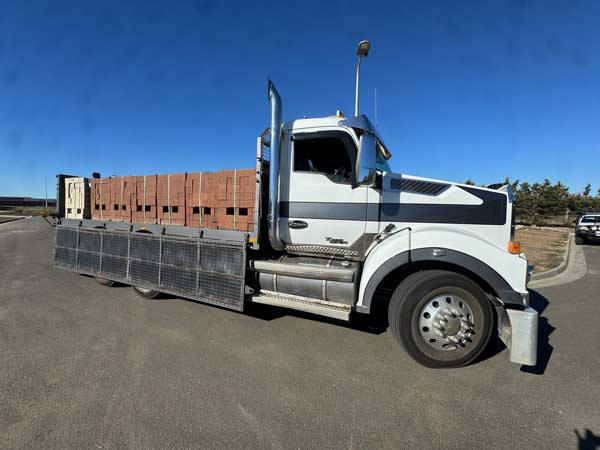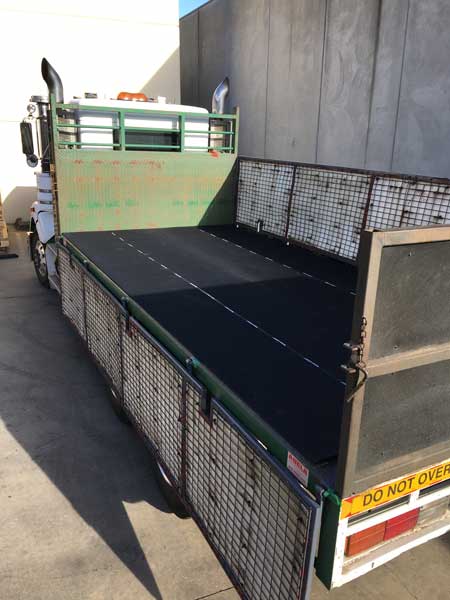Project Overview
A specialist transport company working for a major Australian brick manufacturer was contracted to deliver pallets of bricks directly from the brick manufacturing yard to customer sites across the state. As part of a broader health and safety review, the brick manufacturer required its contracted transport companies to re-evaluate their load restraint practices to meet the latest safety expectations and regulatory requirements.
The contractor engaged a load restraint engineer to assess their current system and design a compliant and efficient load securing method, aligned with the principles of the National Transport Commission’s Load Restraint Guide.

Challenge
Historically, transporting palletised items such as bricks required individual lashing of every pallet to the truck, which was a time-consuming and labour-intensive process. This not only slowed down loading and delivery times but also added operational costs, putting pressure on profitability of the contract.
The transport company needed a solution that could meet their requirements, including:
- Comply with load restraint requirements
- Improve loading efficiency
- Reduce handling time without compromising safety
Solution: Load Mat Integrated into Custom Load Restraint System
Working with the load restraint engineer, the transport company implemented a custom-designed load restraint system that included strengthened side gates to secure the outer edges of the load. A key feature of this system was the addition of high-friction rubber load matting, placed beneath the pallets on the trailer deck.
The Load Mat played a critical role in:
- Increasing friction between the pallet bases and the truck deck
- Reducing the forces of movement generated during braking, cornering, and acceleration
- Eliminating the need to individually lash each pallet, as the increased friction and reinforced side gates provided compliant load security
Outcome
The improved load restraint system:
- Enhanced transport safety by reducing load movement risk
- Complied with the NTC Load Restraint Guide principles, ensuring regulatory alignment
- Significantly improved loading and delivery efficiency, allowing quicker turnaround times
- Maintained operational profitability by reducing time and labour involved in securing loads
Conclusion
By integrating high-friction Reglin Rubber load mats into their engineered load restraint system, the transport contractor achieved a practical and compliant solution that improved both safety and efficiency. This case demonstrates how Rubber Load Mat can play a valuable role in modern load restraint systems across the transport industry, helping businesses reduce handling time and deliver loads safely and profitably.

Contact Reglin today to learn more about improving load restraint with high-performance rubber Load Mat solutions.
